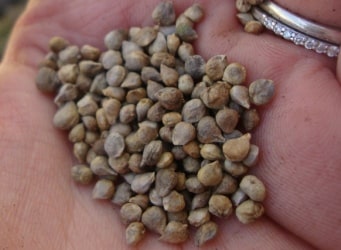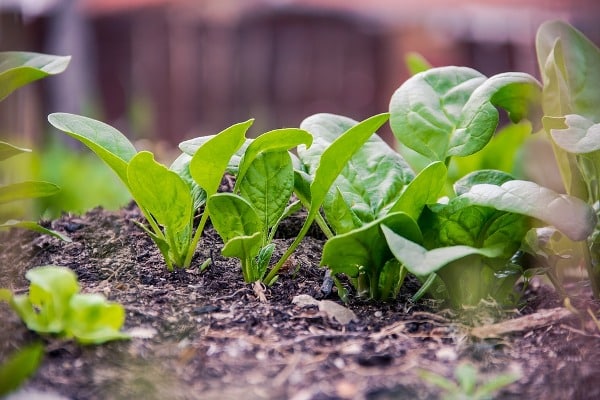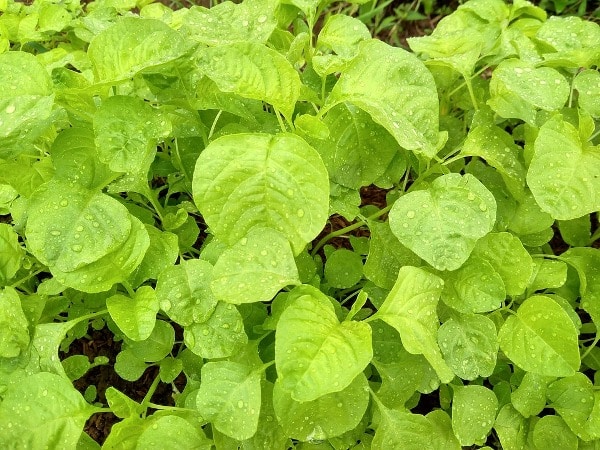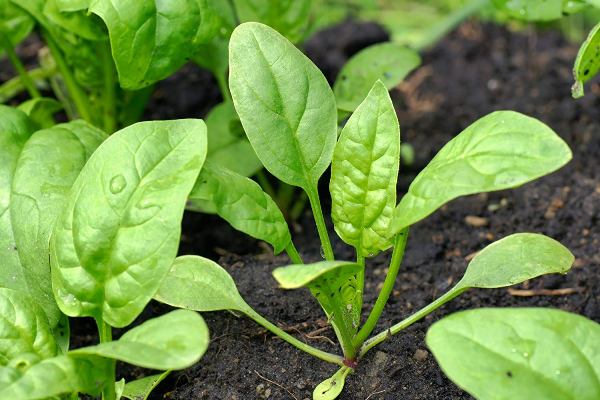Growing Spinach In Containers:
The following information is all about Growing Spinach in Containers, Pots, Indoors, and Backyards.
Growing spinach at home is nothing new, it is done for many centuries. Spinach is basically originated from the forests of Nepal or Southeast Asia. During the 7th century, spinach is widely grown in China, which spread all over the world. Young Spinach leaves have amazing flavor, they great taste in salads, sandwiches, soups, and stir-fries. Spinach is a cool-season leafy vegetable, that can tolerate one or two frosts, and it cannot tolerate sub-freezing temperatures for a long time, the leave may turn green goo. For growing spinach in cool regions, choose temperature-resistant varieties like ‘Bloomsdale’ or ‘Regiment’. Spinach is a good source of vitamin A, vitamin B2, vitamin B6, vitamin C, potassium, magnesium, and calcium. And it in fiber, carbohydrates, proteins.
Spinach starts out as a low rosette of leaves like other cool-season vegetables. Spinach grows will minimum care and optimum temperature and water. Spinach is not tolerant to high temperatures, the plant bolts, a flower stalk grows up when the temperature rises.
Spinach seeds are very sensitive to high temperatures. For spinach seeds germinate, the temperature should not exceed 24°C and seeds may spoil or may not sprout.
If planning to grow spinach in the summer, you need to select the spinach varieties that are resistant to heat. The spinach varieties like Tyee or Space are resistant to high temperature. And while growing spinach in the summer the container should be placed in the shade, and mulch to control the soil temperatures. In the case of freezing winters, use row covers to protect them from low temperatures.
- Scientific Name for Spinach: Spinacea Oleracia.
- Common Names for Spinach: Spinach, Palak, leafy greens, Persian vegetables,s, etc.
- Spinach belongs to the family of Solanaceae.
Varieties of Spinach for Growing Spinach in Containers:
There are many varieties of spinach, they are categorized based on their leaf type and their growing season. Spinach is mainly grouped into 3 types, they are crinkly Savoy spinach, smooth leaf spinach, and semi-savoy spinach.
Savoy Spinach:
Some Unusual Spinach varieties that are not common:
Baby spoon spinach: these baby spoon spinaches are a special variety in savoy spinaches, have a rich-green, texture with very small-sized leaves than normal savoy varieties. These spinach leaves are crispy and coarse with a very sweet taste than normal spinach. The spinach plants have tender stems that are edible.
Red Spinach:
This variety of spinach has red-colored thick round leaves that with rich green color at the center. Red spinach leaves are tender and succulent with an amazingly sweet taste.
Savoy spinach:
These spinach leaves are curled in a dark green color. The savoy spinach leaves are crisp and springy. These varieties of spinaches produce high yields and are cold tolerant. These spinaches have a deeply crinkled leaf, with they grow in very short height, which makes leaves dirty. Cleaning this a big chore while harvesting and using this variety.
Some savoy spinach varieties:
- Regiment: it is hybrid savoy spinach, that is disease resistant. This spinach variety produced high yields. The leaves will be in deep green color and are very tender and crispy.
- Bloomsdale: these spinaches are a classic variety with thick leaves in a light green color. These spinaches are temperature and disease-resistant and produces high yields in early summer. These plants can bolt under extreme weather conditions.
Semi-savoy spinach:
Semi-savoy spinach offers slightly crinkled leaves, with a crisp texture. These spinach leaves are used as fresh vegetables or even for processing. These plants grow upright and not get in touch with the soil, so these spinaches are easy to harvest and clean. These are highly disease, temperature, and bolt resistant and the best choice for growing in containers.
- Tyee: it is a hybrid variety of semi-savoy spinach with a harvesting period of 45 days. This semi-spinach variety is resistant to Downey Mildew. This is semi-savoy variety grows vigorously, it and the stems grow upright and produce dark green leaves. This spinach is high bolt resistant and grown throughout the year in mild winter regions.
- Catalina: it is a hybrid variety of semi-savoy spinach with a harvesting period of 48 days. This spinach has spear-shaped leaves that are thick and succulent. This semi-spinach variety has moderate bolt resistance.
- Teton: it is a hybrid variety of semi-savoy spinach with a harvesting period of 40-45 days. And is resistant to Downey Mildew. It is a 3-season, semi-savoy spinach that has and produces deep green oval leaves. These spinach stems, grow upright and are very slow to bolt.
- Indian Summer is a hybrid variety of semi-savoy spinach with a harvesting period of 40-45 days. It is a highly productive variety, grows well in three seasons, spring, summer, and fall. The spinach leaves are flattened and have a very smooth texture. These spinaches are very slow to bolt.
Smooth- or flat-leaf spinach:
These spinach leaves are smooth, broad, flat, spade-shaped, and these stems grow upright and easy to clean and harvest than the savoy or semi-savoy spinaches. These spinaches are best for commercial growers, this spinach is good for canning and freezing. These are the best spinach for fresh consumption. But flat-leaf spinach is sold fresh as well.
- Space: it is a hybrid variety of semi-savoy spinach with a harvesting period of 45 days. And is resistant to Downey mildew. It is bolt-resistant than other smooth leafed spinach varieties.
- Red Cardinal: it is a hybrid variety of semi-savoy spinach with a harvesting period of 25-30 days. These spinach leaves have red veins with deep red stems and these spinach leaves look like beet leaves. Young spinach leaves are harvested, these have a good flavor when added to salads. These plants bolt faster than any green-leafed spinach and are good to harvest younger.
Spinach Varieties for Growing in Hot Weather
New Zealand Spinach and Malabar Spinach are not really related to spinach but are the best alternative to grow in summers when the summer heat makes it unsuitable for growing true spinach.
- New Zealand Spinach: These spinach leaves are crisp, succulent, and they melt in your mouth as to when to crush them hardily. This variety is good when eaten raw, but it gets mashed when cooked.
- Malabar Spinach: This spinach variety grows well in the high summer heat and these plants are vine plants and need trellis support to grow. Malabar Spinach is the best companion plant. Side shoots are harvested regularly and suit for stir-fry whole shoots and leaves.
Propagating Methods for Growing Spinach In Containers:
The best way to propagate spinach is from its seeds. Spinach can be easily propagated from seeds in containers. Spinach seeds germinate at optimum soil temperatures between 15 to 20 °C. And the plants grow well under crisp, sunny regions.

The season for Growing Spinach In Containers:
Spinach is a cool-season vegetable, and the best season to grow spinach in containers is in very early spring, and in fall and winter.
Containers for Growing Spinach In Containers:
Suitable containers for growing spinach in the container should be at least 6-8 inches deep and 7 to 8 in width. The container should have more width than depth. Choose a smaller container if you plant to grow one plant, and a large container if growing more than one plants choose large containers. Select large window boxes, wooden boxes, plastic or ceramic containers, or any recycled bins.
Make sure the container should have 2 to 3 drain holes. And wash the container with warm water and soap before planting. And fill the bottom layer of the container with a thin layer of gravel.
Soil for Growing Spinach In Containers:

This leafy vegetable requires a good quality potting soil rich in organic matter for growing in containers. The soil should be crumbly and loamy. Avoid soil that clogs the draining and keeps waterlogged. The spinach plants need well-drained for optimum growth in containers. The pH level of the soil should be neutral.
Potting soil tips for spinach:
- Enrich the soil with a nutrient-rich mix, add some slow-release fertilizer to your potting soil before planting.
- If the soil you are using is poor in draining, add some grit, perlite, or composted bark to your potting soil.
- If planning to prepare your own potting mix: mix the equal proportions of 1/3 driver sand /vermiculite/ perlite + 1/3 coir or peat and 1/3 well-rotted manure or compost along with a balanced slow-release fertilizer.
Growing Spinach In Containers from Seeds:
- Use a seed tray filled with seed starting potting mix to sow the seeds. Sow seeds 1/2 inches deep in the seed tray. Spinach seeds will take 5-14 days to germinate.
- Transplant them into the desired container, once the 2-3 true leaves appear on each plant very carefully.
- Fill the desired container with potting soil, leaving a 2-inch space between the soil surface and the rim of the container.
- Now transplant the spinach seedling very carefully, and water them, and place them outdoors.
Spacing Requirement for Growing Spinach In Containers:
Each spinach seedling should be planted 3-6 inches apart. If planning to harvest very young spinach leaves, the spacing between the seedling can be reduced.
Location for Growing Spinach In Containers:

- If growing spinach in fall, place the container in a sunny location.
- If growing spring and summer planting, place your containers in a shaded location where it receives a good amount of light.
- If growing in subtropical or tropical regions, place the containers in a location where it receives plenty of shade.
Watering Requirement for Growing Spinach In Containers:
- Spinach grows well in cool soil, to maintain moisture levels in the soil. Don’t make the soil too wet or soggy.
- Overwatering can cause water stagnation and leads to root rot and fungal diseases.
Temperature Requirement for Growing Spinach In Containers:
- An ideal temperature for spinach seeds to germinate should be below 4°C to 10°C.
- The ideal soil temperature, soil for growing spinach should be between 10-27 °C.
- Spinach can tolerate temperatures down to -6°Cand up to 32°C.
Sunlight Requirement for Growing Spinach In Containers:
- Spinach thrives well in full sun to light shade.
- Spinach needs 6 to 7 hours of sunlight in a day.

Caring tips for Growing Spinach In Containers:
Spinach doesn’t need any special care. They need regular watering, feeding, and good potting soil to grow.
Fertilizers for Growing Spinach In Containers:
- Spinach requires nitrogen for healthy growth, so feed the plant with nitrogen-rich fertilizers.
- Enrich the potting soil with organic time-based fertilizer or compost or well-rotted manure. This will provide nutrients constantly and slowly in the required quantities.
- You can also feed the plant with fish emulsion, compost, or manure tea during the growing period, organic feed is good for human consumption.
- Instead of granular fertilizer during planting, you can also fertilize the plant with a balanced liquid fertilizer throughout the growing period.
Mulching for Growing Spinach In Containers:
Spinach needs mulching. Mulch the plants with organic matter the helps to retain moisture for long periods.
Pests and Diseases in Growing Spinach In Containers:
- Spinach grown in a container is not much affected by pests and easy to control.
- Common pests that affect spinach are leaf-eating insects like slugs, caterpillars, and some common garden pests like aphids. Use organic pesticides to protect plants from leaf-eating pests.
- Grow Spinach in cold climates will protect the plant from pests
- White rust, blue mold, and Fusarium wilt are the main common diseases that affect spinach plants.
- White rust is affected during cool and humid climates.
- Use organic fungicides to treat fungal diseases.
Tips for Growing Spinach In Containers in Tropical Regions:
- Spinach is a cool-season crop, but if you are living in tropical and subtropical regions, you can grow spinach providing them a suitable environment
- You can grow twice a year, leaving the hot summer months.
- You should grow them in shade and by providing enough water and keeping the soil temperature cool and maintaining constant moisture levels in the soil.
- And select the heat-tolerant varieties that are bolt resistant and diseases resistant. The varieties should resist humid conditions.
Harvesting Tips for Growing Spinach In Containers:

- The harvesting period of spinach is about 37 to 50 days after the germination period, depending on the variety you are growing and climatic conditions.
- The spinach plant can be harvested when it grows up to 3 to 4 inches in height and produces 5 to 6 healthy leaves.
- Harvest the outer leaves first and don’t pick the very young leaves, let them grow. You can harvest the whole plant, leaving the stem at the base with a sharp knife or scissors and the plants regrow.
- When the temperature is humid and very hot, the plant soon sends a flower stalk producing small yellow and green colored flowers.
- Once the plants start bolting, the foliage gets thickens and its taste turns bitter. To harvest the plant before it bolts.
Storing Tips for Growing Spinach In Containers:
- You can store fresh spinach, wrap it in a paper towel and store it in an airtight container. And place the container in the refrigerator and spinach stays fresh for more than 10 days.
- Don’t store the spinach with bananas or apples, spinach will wilt and decay faster
- You may store the spinach in a dry plastic bag, it can stay fresh for a week. But you should consume it within 3 to 7 days.
- Store it in the cold, not at freezing temperature. Spinach gets frozen when stored at -5°C or below. Make sure the refrigerator temperature should more than – 5°C.
- Storing the spinach in the fridge will protect spinach from losing its nutrients.
Read this: Growing Broccoli In Pots.
In case if you are interested in this: Hydroponic Nutrient Chart.
- Economical Aquaculture: A Guide to Low-Budget Fish Farming
- 15 Common Planting Errors That Can Doom Your Fruit Trees
- How to Make Houseplants Bushy: Effective Tips and Ideas
- Innovative Strategies for Boosting Coconut Pollination and Yield
- Pollination Strategies for Maximum Pumpkin Yield
- The Complete Guide to Chicken Fattening: Strategies for Maximum Growth
- Natural Solutions for Tulip Problems: 100% Effective Remedies for Leaf and Bulb-Related Issues
- Revolutionizing Citrus Preservation: Towards a Healthier, Greener Future
- Natural Solutions for Peony Leaf and Flower Problems: 100% Effective Remedies
- Maximizing Profits with Avocado Contract Farming in India: A Comprehensive Guide
- Natural Solutions for Hydrangea Problems: 100% Effective Remedies for Leaf and Flowers
- The Ultimate Guide to Choosing the Perfect Foliage Friend: Bringing Life Indoors
- From Sunlight to Sustainability: 15 Ways to Use Solar Technology in Agriculture
- The Ultimate Guide to Dong Tao Chicken: Exploring from History to Raising
- The Eco-Friendly Makeover: How to Convert Your Unused Swimming Pool into a Fish Pond
- Mastering the Art of Delaware Chicken Farming: Essentials for Healthy Backyard Flocks
- 20 Best Homemade Fertilizers for Money Plant: DIY Recipes and Application Methods
- How to Craft a Comprehensive Free-Range Chicken Farming Business Plan
- Brighten Your Flock: Raising Easter Egger Chickens for Beauty and Bounty
- How to Optimize Your Poultry Egg Farm Business Plan with These Strategies
- Subsidy for Spirulina Cultivation: How Indian Government Schemes Encouraging Spirulina Farmers
- Ultimate Guide to Raising Dominique Chickens: Breeding, Feeding, Egg-Production, and Care
- Mastering the Art of Raising Jersey Giant Chickens: Care, Feeding, and More
- Ultimate Guide to Raising Legbar Chickens: Breeding, Farming Practices, Diet, Egg-Production
- How to Raise Welsummer Chickens: A Comprehensive Guide for Beginners
- How to Protect Indoor Plants in Winter: A Comprehensive Guide
- Ultimate Guide to Grow Bag Gardening: Tips, Tricks, and Planting Ideas for Urban Gardeners